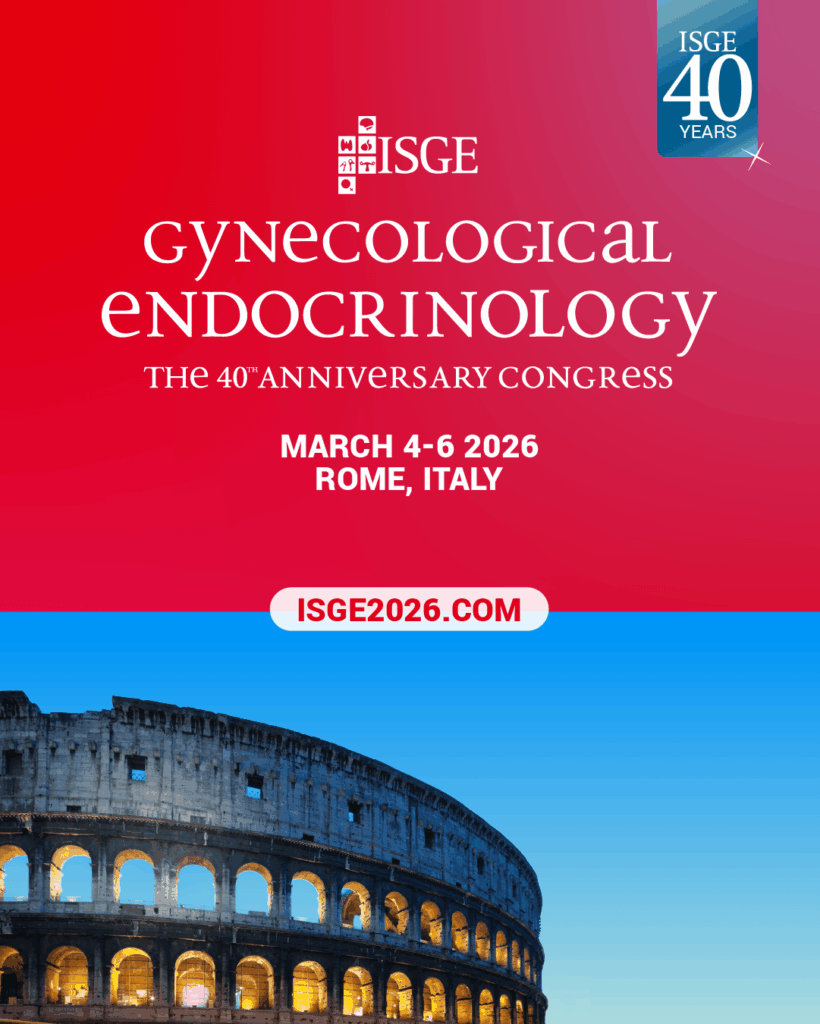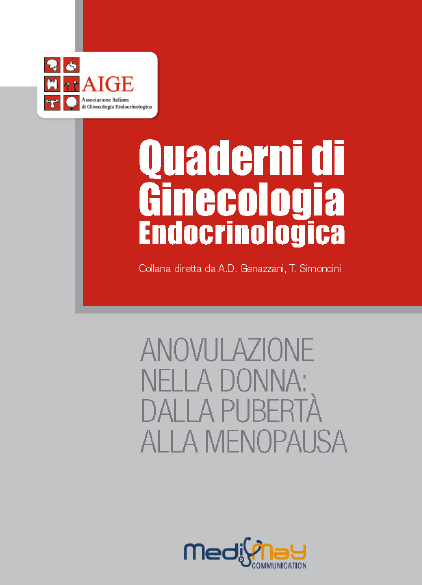| |
|
|
| |
Authors: |
Li Tian, Huan Shen, Qun Lu, Robert J. Norman, and Jim Wang
|
| |
Title: |
Insulin Resistance Increases the Risk of Spontaneous Abortion after Assisted Reproduction Technology Treatment
|
| |
Journal: |
J. Clin. Endocrinol. Metab., 92: 1430 – 1433, 2007.
|
| |
Objective: |
This study aims to examine the impact of insulin resistance (IR) on the risk of spontaneous abortion in patients who received infertility treatment.
|
| |
Patients and Methods: |
This is a cohort study of 107 patients who achieved their first pregnancy after infertility treatment in a tertiary medical center. A homeostasis model assessment of IR (HOMA-IR) was carried out. Patient demographic characteristics and pregnancy outcome were also recorded. Statistical comparison was made between patients with and without IR. Logistical regression analysis was used to assess the effect of IR and several other factors simultaneously on the risk of spontaneous abortion.
|
| |
Results: |
The incidence of spontaneous abortion was 17.8%. The association of IR with the risk of spontaneous abortion was significant after djusting for other risk factors. The effect of overweight/obesity and polycystic ovarian syndrome was not statistically significant in the multivariate model.
|
| |
Discussion and Conclusion: |
This study suggested that IR was an independent risk factor for spontaneous abortion. Because of the high prevalence of IR in obese or polycystic ovarian syndrome patients, the risk of spontaneous abortion in these patients can be raised. Patients with IR should be advised to improve their insulin sensitivity through lifestyle change or medical intervention before infertility treatment to reduce their risk of spontaneous abortion.
|
| |
|
| |
|
| |
|
| |
|
| |
|
| |
|
| |
|
|
| |
Authors: |
Roberto Negro, Gabriele Greco, Tiziana Mangieri, Antonio Pezzarossa, Davide Dazzi, and Haslinda Hassan
|
| |
Title: |
The Influence of Selenium Supplementation on Postpartum Thyroid Status in Pregnant Women with Thyroid Peroxidase Autoantibodies
|
| |
Journal: |
J. Clin. Endocrinol. Metab., 92: 1263 – 1268, 2007.
|
| |
Context: |
Pregnant women who are positive for thyroid peroxidase antibodies [TPOAb(+)] are prone to develop postpartum thyroid dysfunction (PPTD) and permanent hypothyroidism. Selenium (Se) decreases thyroid inflammatory activity in patients with autoimmune thyroiditis.
|
| |
Objective: |
We examined whether Se supplementation, during and after pregnancy, influences the thyroidal autoimmune pattern and function.
|
| |
Design: |
This was a prospective, randomized, placebo-controlled study.
|
| |
Setting: |
The study was conducted in the Department of Obstetrics and Gynecology and Department of Endocrinology.
|
| |
Patients |
A total of 2143 euthyroid pregnant women participated in the study; 7.9% were TPOAb(_).
|
| |
Interventions: |
During pregnancy and the postpartum period, 77 TPOAb(+) women received selenomethionine 200 _g/d (group S1), 74 TPOAb(+) women received placebo (group S0), and 81 TPOAb(+) age-matched women were the control group (group C).
|
| |
Main Outcome Measures: |
We measured the prevalence of PPTD and hypothyroidism. |
| |
Results: |
PPTD and permanent hypothyroidism were significantly lower in group S1 compared with S0 (28.6 vs. 48.6%, P_0.01; and 11.7 vs. 20.3%, P _ 0.01).
|
| |
Conclusion: |
Se supplementation during pregnancy and in the postpartum period reduced thyroid inflammatory activity and the incidence of hypothyroidism.
|
| |
|
| |
|
| |
|
| |
|
| |
|
| |
|
|
| |
Authors: |
S. Yamada, Y. Uenoyama, M. Kinoshita, K. Iwata, K. Takase, H. Matsui, S. Adachi, K. Inoue, K.-I. Maeda, and H. Tsukamura
|
| |
Title: |
Inhibition of Metastin (Kisspeptin-54)-GPR54 Signaling in the Arcuate Nucleus-Median Eminence Region during Lactation in Rats
|
| |
Journal: |
Endocrinology, 148: 2226 – 2232, 2007.
|
| |
|
Follicular development and ovulation are suppressed during lactation in various mammalian species, mainly due to the suppression of pulsatile GnRH/LH secretion. Metastin (kisspeptin-54), a KiSS-1 gene product, is an endogenous ligand for GPR54, a G-protein-coupled receptor, and suggested to play a critical role in regulating the gonadal axis. The present study therefore aims to determine whether metastin (kisspeptin-54)-GPR54 signaling in discrete brain areas is inhibited by the suckling stimulus that causes suppression of LH secretion in lactating rats. Quantitative RT-PCR revealed that the KiSS-1 mRNA level was significantly lower in the arcuate nucleus (ARC)-median eminence region in lactating ovariectomized (OVX) and estrogen-treated OVX rats than in nonlactating controls. KiSS-1 mRNA in the anteroventral periventricular nucleus was kept at a low level in both lactating and nonlactating rats despite estrogen treatment. GPR54mRNAlevels were significantly lower in lactating than nonlactating rats in the anteroventral periventricular nucleus, but the levels in lactating mothers of the preoptic area and ARC-median eminence were comparable with nonlactating controls. Although KiSS-1 mRNA-expressing cells or metastin (kisspeptin-54) immunoreactivities were densely located in the ARC of nonlactating controls, few were found in the ARC of lactating OVX animals. Various doses of metastin (kisspeptin-54) (0.02, 0.2, and 2 nmol) injected into the third ventricle caused a significant increase inLHsecretion in both lactating and nonlactatingOVXrats, suggesting that lactating rats are responsive to metastin (kisspeptin-54) stimulus. Thus, the present study demonstrated that KiSS-1 mRNA/metastin (kisspeptin-54) expression is inhibited in theARCby the suckling stimulus, suggesting that the inhibition is most probably involved in suppressing LH secretion in lactating rats.
|
| |
|
| |
|
| |
|
| |
|
| |
|
| |
|
|
| |
Authors: |
Renato Fanchin, Daniel H. Mendez Lozano, Nelly Frydman, Alain Gougeon, Nathalie di Clemente, René Frydman, and Joëlle Taieb
|
| |
Title: |
Anti-Müllerian Hormone Concentrations in the Follicular Fluid of the Preovulatory Follicle Are Predictive of the Implantation Potential of the Ensuing Embryo Obtained by in Vitro Fertilization
|
| |
Journal: |
J. Clin. Endocrinol. Metab., 92: 1796 – 1802, 2007.
|
| |
Context: |
The strong relationship between serum anti-Mullerian hormone (AMH) levels and the number of antral follicles supports the use of AMH measurements as a quantitative marker of the ovarian follicular status. Yet, it still is unclear whether the aptitude of an individual follicle to produceAMHreflects its reproductive competence.
This study examined the possible relationship between serum or follicular fluid (FF) AMH concentrations and the fate of the ensuing oocytes and embryos obtained by in vitro fertilization-embryo transfer conducted in monodominant follicle cycles.
|
| |
Objective: |
This study examined the possible relationship between serum or follicular fluid (FF) AMH concentrations and the fate of the ensuing oocytes and embryos obtained by in vitro fertilization-embryo transfer conducted in monodominant follicle cycles.
|
| |
Design and Setting: |
We conducted a prospective study at the University of Paris XI, Assistance Publique-Hoˆpitaux de Paris, Institut National de la Sante´ et de la Recherche Me´dicale U782.
|
| |
Patients: |
Patients included 118 infertile in vitro fertilization-embryo transfer candidates.
|
| |
Interventions: |
Concentrations of AMH, progesterone, and estradiol were measured in the serum on cycle d 3 and on the day of oocyte pickup (dOPU), and in FF. Cycles were sorted into three sets of three distinct groups according to whether serum d 3, serum dOPU, and FF AMH concentrations were 30th centile or below (low AMH), between the 31st and the 70th centiles (average AMH), or above the 70th centile (high AMH) of measurements.
|
| |
Main Outcome Measure: |
Clinical pregnancy and embryo implantation rates were assessed.
|
| |
Results: |
Clinical pregnancy rates (5.7, 20.0, and 39.5%, respectively; P _ 0.002) and embryo implantation rates (11.8, 30.8, and 65.4, respectively; P _0.001) were markedly different among the low, moderate, and high FF AMH groups but not among the serum (d 3 or dOPU) AMH groups. Fertilization rates and embryo morphology remained similar irrespective of AMH concentrations in the serum or in FF. Incidentally, FF AMH concentrations were negatively correlated with FF progesterone (r=-0.27; P<_0.003) and FF estradiol (r=-0.21; P<_0.02) concentrations.
|
| |
Discussion and Conclusion: |
Concentrations of AMH in the FF, but not in the serum, constitute a useful follicular marker of embryo implantation and are negatively related to FF progesterone and estradiol concentrations.
|
| |
|
| |
|
| |
|
| |
|
| |
|
| |
|
|
| |
Authors: |
T. Hajszan, N.J. MacLusky, J. A. Johansen, C. L. Jordan, and C. Leranth
|
| |
Title: |
Effects of Androgens and Estradiol on Spine Synapse Formation in the Prefrontal Cortex of Normal and Testicular Feminization Mutant Male Rats
|
| |
Journal: |
Endocrinology, 148: 1963 – 1967, 2007.
|
| |
|
Recent studies suggest that, in female monkeys and rats, estrogens elicit dendritic spine synapse formation in the prefrontal cortex, an area that, similar to the hippocampus, plays a critical role in cognition. However, whether gonadal hormones induce synaptic remodeling in the male prefrontal cortex remains unknown. Here we report that gonadectomy reduced, whereas administration of 5_-dihydrotestosterone or estradiol-benzoate to castrated male rats increased, the number of medial prefrontal cortical (mPFC) spine synapses, with estradiol-benzoate being less effective than 5_-dihydrotestosterone. To investigate whether the androgen receptor contributes to the mediation of these changes, we compared the response of testicular feminization mutant (Tfm) male rats to that of wild-type animals. The number of mPFC spine synapses in gonadally intact Tfm rats and 5_-dihydrotestosterone-treated castrated Tfm males was considerably reduced compared to intact wild-type animals, whereas the synaptogenic effect of estradiol-benzoate was surprisingly enhanced in Tfm rats. These data are consistent with the hypothesis that remodeling of spine synapses in the prefrontal cortex may contribute to the cognitive effect of gonadal steroids. Our findings in Tfm animals indicate that androgen receptors may mediate a large part of the synaptogenic action of androgens in the mPFC of adult males. However, because this effect of 5_-dihydrotestosterone is not completely lost in Tfm rats, additional mechanisms may also be involved.
|
| |
|
| |
|
| |
|
| |
|
| |
|
| |
|
|
| |
Authors: |
J. Nawrocka, A. Starczewski
|
| |
Title: |
Effects of metformin treatment in women with polycystic ovary syndrome depends on insulin resistance
|
| |
Journal: |
Gynecological Endocrinology 23: 231-237, 2007.
|
| |
|
Polycystic ovary syndrome (PCOS) affects 5-10% of women at reproductive age, and is the most common reason for hyperandrogenism and chronic anovulation. Some patients with PCOS are insulin-resistant. Also, lowered sex hormone-binding globulin (SHBG) concentration is usually observed. As a consequence, the amount of free and biologically active androgens increases. This implies that, by improving insulin and carbohydrate metabolism, metformin administration in PCOS patients could indirectly contribute to increase SHBG concentration. The aim of the present study was to assess the effects of metformin treatment in PCOS patients both with and without insulin resistance. Thirty-six patients completed treatment. Body mass index (BMI) was considerably reduced after therapy. Statistically significant decreases were noted in luteinizing hormone (LH) and fasting insulin concentrations and the free androgen index (FAI), and significant increases in follicle-stimulating hormone (FSH)/LH ratio and SHBG concentration. In the insulin-resistant group, BMI and fasting insulin concentrations were reduced considerably after treatment, and SHBG increased slightly. In the group of patients without insulin resistance, BMI, LH and FAI showed significant reductions, and FSH/LH and SHBG considerable increases. Considering the favorable effects of metformin treatment in PCOS patients both with insulin resistance and without it, it is purposeful to use this drug in both groups of women.
|
| |
|
| |
|
| |
|
| |
|
| |
|
| |
|
|
| |
Authors: |
Gonadotropins and Ovarian Cancer
|
| |
Title: |
Jung-Hye Choi, Alice S. T. Wong, He-Feng Huang, and Peter C. K. Leung
|
| |
Journal: |
Endocrine Reviews 28: 440–461, 2007.
|
| |
|
Ovarian epithelial cancer (OEC) accounts for 90% of all ovarian cancers and is the leading cause of death from gynecological cancers in North America and Europe. Despite its clinical significance, the factors that regulate the development and progression of ovarian cancer are among the least understood of all major human malignancies. The two gonadotropins, FSH and LH, are key regulators of ovarian cell functions, and the potential role of gonadotropins in the pathogenesis of ovarian cancer is suggested. Ovarian carcinomas have been found to express specific receptors for gonadotropins. The presence of gonadotropins in ovarian tumor fluid suggests the importance of these factors in the transformation and progression of ovarian cancers as well as being prognostic indicators. Functionally, there is evidence showing a direct action of gonadotropins on ovarian tumor cell growth. This review summarizes the key findings and recent advances in our understanding of these peptide hormones in ovarian cancer development and progression and their role in potential future cancer therapy. We will first discuss the supporting evidence and controversies in the “gonadotropin theory” and the use of animal models for exploring the involvement of gonadotropins in the etiology of ovarian cancer. The role of gonadotropins in regulating the proliferation, survival, and metastasis of OEC is next summarized. Relevant data from ovarian surface epithelium, which is widely believed to be the precursor of OEC, are also described. Finally, we will discuss the clinical applications of gonadotropins in ovarian cancer and the recent progress in drug development.
|
| |
|
| |
|
| |
|
| |
|
| |
|
| |
|
|
| |
Authors: |
R. Sitruk-Ware, G. Plu-Bureau, J. Menard, J. Conard, S. Kumar, J.C. Thalabard, B. Tokay, P. Bouchard
|
| |
Title: |
Effects of Oral and Transvaginal Ethinyl Estradiol on Hemostatic Factors and Hepatic Proteins in a Randomized, Crossover Study
|
| |
Journal: |
J Clin Endocrinol Metab 92: 2074–2079, 2007.
|
| |
Context: |
The use of combined hormonal contraceptives with ethinyl estradiol (EE) and a progestin results in alterations in potential biomarkers of venous thromboembolism risk. Evaluation of the impact of delivery route on these changes is difficult due to an interaction between EE and the progestin component. |
| |
Objective: |
The aim of the study was to compare the impact of oral
and vaginal administration of EE alone on hemostatic variables and estrogen-sensitive liver proteins.
|
| |
Design: |
This was a single-center, randomized, crossover study with two treatment cycles separated by a washout cycle.
|
| |
Setting: |
The study was conducted in an academic outpatient center. |
| |
Participants: |
Fourteen healthy postmenopausal women were enrolled; 13 completed the study and were included in the analyses.
|
| |
Intervention: |
Participants were randomized to receive EE (15 μg/d) delivered by oral tablet or vaginal ring for 21 d in one of two treatment sequences.
|
| |
Main Outcome Measures: |
Changes in plasma concentration or activity of 10 hemostatic variables and six estrogen-sensitive liver proteins between baseline and d 21 of treatment were the primany outcomes.
|
| |
Results: |
Prothrombin fragment 1 + 2 plasma level was unaffected by treatment or delivery route. Angiotensinogen (expressed as plasma level of angiotensin I) increased similarly with oral and vaginal delivery; mean (SD) increases were 2757 (1033) and 2864 (893) ng /ml, respectively (P = 0.0002). Alterations in other study variables, except total cholesterol, were similar with oral and vaginal administration.
|
| |
Discussion and Conclusion: |
Our results provide evidence that the customary effects of combined hormonal contraceptives on hemostatic variables and estrogen-sensitive liver proteins are largely related to EE and independent of delivery route during short-term treatment.
|
| |
|
| |
|
| |
|
| |
|
| |
|
| |
|
|
| |
Authors: |
E. Debing, E. Peeters, W. Duquet, K. Poppe, B. Velkeniers, P, Van den Brande
|
| |
Title: |
Endogenous sex hormone levels in postmenopausal women undergoing carotid artery endarterectomy
|
| |
Journal: |
Eur. J. Endocrinol. 156: 687-693, 2007.
|
| |
Objective: |
To study the endogenous sex hormone levels in natural postmenopausal women and their association with the presence of internal carotid artery (ICA) atherosclerosis
|
| |
Design: |
Case-control study
|
| |
Methods: |
We compared 56 patients with severe ICA atherosclerosis referred for carotid artery endarterectomy (CEA) with 56 age-matched control subjects free of severe atherosclerotic disease. The presence of atherosclerosis was determined by high-resolution B-mode ultrasound. Metabolic parameters and sex hormones were measured or calculated: total cholesterol, high-density lipoprotein, low-density lipoprotein, triglycerides, glucose, insulin, quantitative insulin sensitivity check index, insulin resistance index, IGF-I, DHEA, DHEA sulfate (DHEA-S), free testosterone, total testosterone, estrone, estradiol, androstenedione, and sex hormone-binding globulin.
|
| |
Results: |
The cases had statistically significant lower levels of both total testosterone (0.23 ± 0.12 vs 0.31 ± 0.20 µg/l, P = 0.043) and free testosterone (3.42 ± 1.94 vs 4.59 ± 2.97 ng/l, P = 0.009) and significantly lower levels of androstenedione (625.3 ± 168.7 vs 697.0 ± 211.9 ng/l, P = 0.017) when compared with controls. Multivariate linear regression analysis, adjusted for traditional cardiovascular risk factors, baseline and physiologic characteristics, showed a significant inverse relationship between both serum free testosterone (ß = –0.234, P = 0.028) and androstenedione (ß = –0.241, P = 0.028) levels with the presence of severe atherosclerosis of ICA.
|
| |
Conclusion: |
The study provides evidence of a positive association between low serum androgen levels and severe ICA atherosclerosis in postmenopausal women. It suggests that higher, but physiological, levels of androgens in postmenopausal women have a protective role in the development of atherosclerosis of ICA.
|
| |
|
| |
|
| |
|
| |
|
| |
|
| |
|
|
| |
Authors: |
E. Windler, B.C. Zyriax, B. Eidenmüller, H. Boeing
|
| |
Title: |
Hormone replacement therapy and risk for coronary heart disease: Data from the CORA-study—A case-control study on women with incident coronary heart disease
|
| |
Journal: |
Maturitas 57: 239-246, 2007.
|
| |
Background: |
Hormone replacement therapy (HRT) has been suggested to prevent cardiovascular disease, while some intervention studies have shed doubt on this concept. Thus, uncertainty remains whether current HRT use is beneficial as to cardiovascular disease or may even be harmful.
|
| |
Objectives: |
This research investigates the association of hormone replacement therapy, risk factors and lifestyle characteristics with the manifestation of coronary heart disease in current HRT users versus never users.
|
| |
Design: |
The coronary risk factors for atherosclerosis in women study (CORA-study) provide clinical and biochemical parameters and data on lifestyle in 200 consecutive pre- and postmenopausal women with incident coronary heart disease compared to 255 age-matched population-based controls, of which 87.9% were postmenopausal.
|
| |
Results: |
Significantly more controls than cases used currently HRT for a median of 9.5 years (32.9% versus 20.2%), while 50.0% of cases and 42.5% of controls had never used HRT (p<0.02). Compared to women who never used HRT, current users ate less meat and sausage, had a significantly lower BMI and waist-to-hip ratio and a lower prevalence of hypertension, insulin resistance and diabetes. However, current users among cases were often smokers and smoked significantly more cigarettes than never users. In a multivariate analysis the risk of current HRT users for coronary artery disease was 57% lower than the risk of never users (odds ratio 0.428, CI 0.206–0.860, p<0.02). Adjustment for conventional and dietary risk factors revealed neither current HRT use, nor HRT use combined with smoking as independent risk factors.
|
| |
Conclusions: |
These data from the CORA-study are not compatible with an adverse impact of hormone replacement therapy on cardiovascular disease, rather support the notion of beneficial effects of HRT on weight, central adiposity, insulin sensitivity and blood pressure. Yet, the data do not support the presumption of a general healthy user effect in women on HRT either. Rather, in some women adverse lifestyle habits, especially intense smoking, appear to counteract possible beneficial effects of HRT.
|
| |
|
| |
|
| |
|
| |
|
| |
|
| |
|
|
| |
Authors: |
P. Chedraui, W. Aguirrec, L. Hidalgo, L. Fayad
|
| |
Title: |
Assessing menopausal symptoms among healthy middle aged women with the Menopause Rating Scale
|
| |
Journal: |
Maturitas 57: 271-278, 2007.
|
| |
Background: |
The frequency and intensity of menopausal symptoms within a given population, as assessed by several tools, vary and depend on several factors among them age, menopausal status, chronic conditions and socio-demographic profile.
|
| |
Objective: |
Determine the frequency and intensity of menopausal symptoms as well as associated risk factors among healthy middle aged Ecuadorian women.
|
| |
Design: |
In this cross-sectional study healthy women aged 40 or more, with intact uterus and ovaries, working at the Luis Vernaza Hospital, Guayaquil, Ecuador, were asked to fill out the Menopause Rating Scale (MRS) questionnaire. Symptom frequency and intensity, as well as obtained scores, were assessed and correlated to demographic data.
|
| |
Results: |
During the study period, 300 subjects were surveyed. Mean age was 45.1±3.1 years (median 45). According to menopausal status women were premenopausal (40.6%); perimenopausal (48%) and postmenopausal (11.4%). A 62% of women were not sexually active and 8.3% had less than 12 years of schooling. The 5 most frequent symptoms of the 11 composing the MRS (n=300) were: muscle and joint problems (77%), depressive mood (74.6%), sexual problems (69.6%), hot flushes (65.5%) and sleeping disorders (45.6%). In general, peri- and postmenopausal women significantly presented higher rates of menopausal symptoms when compared to premenopausal women. Total and subscale MRS scores significantly increased in relation to age and the menopausal stage. Women with lower educational level presented higher somatic and psychological scorings in comparison to their counterparts. Sexually inactive women presented higher total as well as somatic, psychological and urogenital scorings. Logistic regression analysis confirmed significant associations found during univariate analysis.
|
| |
Conclusions: |
In this specific healthy population, age, the menopause, sexual inactivity and educational level were independent risk factors predicting more severe menopausal symptoms.
|
| |
|
| |
|
| |
|
| |
|
| |
|
| |
|
|
| |
Authors: |
C.B. Tempfer, E.K. Bentz, S. Leodolter, G. Tscherne, F. Reuss, H.S. Cross, J.C. Huber
|
| |
Title: |
Phytoestrogens in clinical practice: a review of the literature
|
| |
Journal: |
Fertil Steril 87: 1243-1249, 2007.
|
| |
Objective: |
To review clinical studies assessing the effect of phytoestrogen supplementation on the signs and symptoms of the climacteric syndrome and on the incidence of breast cancer, cardiovascular disease, and skeletal fractures.
|
| |
Design: |
Literature research using PubMed and the Cochrane controlled trials register.
|
| |
Results: |
Six systematic reviews and meta-analyses of 25 randomized, controlled trials (RCTs) assessing the use of phytoestrogens for the treatment of the climacteric syndrome were identified. Systematic reviews of RCTs show contradictory results, and meta-analyses demonstrate no statistically significant reduction of vasomotor symptoms for phytoestrogens. Individual RCTs report significant reductions in vasomotor symptoms for red clover and soy phytoestrogens. In selected patient populations, such as in women with early natural postmenopause and mild to moderate vasomotor symptoms, a systematic review of five RCTs found a significant reduction of hot flashes in five out of five RCTs. Twenty-two case-control and cohort studies examined the incidence of breast cancer among women with and without a diet high in phytoestrogens. A meta-analysis of 21 studies found a significantly reduced incidence of breast cancer among past phytoestrogen users. RCTs document beneficial effects of phytoestrogens on surrogate parameters such as bone mineral density, vasodilation, platelet aggregation, insulin resistance, and serum concentrations of triglycerides, high-density lipoprotein, and low-density lipoprotein. None of the available RCTs documents a protective effect of phytoestrogens for the clinical end points of breast cancer, bone fracture, or cardiovascular events.
|
| |
Conclusions: |
Based on the available evidence, phytoestrogens should only be used in selected women, i.e., those presenting with mild to moderate vasomotor symptoms in early natural postmenopause. None of the compounds investigated so far have been proven to protect against breast cancer, bone fracture, or cardiovascular disease.
|
| |
|
| |
|
| |
|
| |
|
| |
|
| |
|
|
| |
Authors: |
K.J. Purcell, M. Schembri, T.L. Telles, V.Y. Fujimoto, M.I. Cedars
|
| |
Title: |
Bed rest after embryo transfer: a randomized controlled trial
|
| |
Journal: |
Fertil Steril 87: 1322-1326, 2007.
|
| |
Objective: |
To determine whether bed rest after embryo transfer leads to improved pregnancy rates (PR).
|
| |
Design: |
Randomized controlled trial.
|
| |
Setting: |
University reproductive health clinic.
|
| |
Patient(s): |
Women undergoing IVF.
|
| |
Intervention(s): |
Patients undergoing 164 cycles of IVF were randomized to 30 minutes of bed rest after embryo transfer or immediate discharge from the clinic.
|
| |
Main Outcome Measure(s): |
Clinical PR defined by visualized fetal heart beat and ongoing PR defined by viable intrauterine gestation beyond 11 weeks.
|
| |
Result(s): |
The clinical and ongoing PR for both groups were 50% and 46.3%, respectively, with no statistically significant difference between the two groups.
|
| |
Conclusion(s): |
Thirty minutes of bed rest after embryo transfer does not improve PR.
|
| |
|
| |
|
| |
|
| |
|
| |
|
| |
|
|
| |
Authors: |
Jie Cai, Hang-ying Lou, Min-yue Dong, Xiu-e Lu, Yi-min Zhu, Hui-juan Gao, He-feng Huang
|
| |
Title: |
Poor ovarian response to gonadotropin stimulation is associated with low expression of follicle-stimulating hormone receptor in granulosa cells
|
| |
Journal: |
Fertil Steril 87: 1350-1356, 2007
|
| |
Objective: |
To explore the importance of follicle-stimulating hormone receptor (FSHR) in granulosa cells in the ovarian response to gonadotropin stimulation.
|
| |
Design: |
Prospective study.
|
| |
Setting: |
A women’s hospital in China.
|
| |
Patient(s): |
One hundred infertile women undergoing ovarian stimulation with recombinant follicle-stimulating hormone (rFSH).
|
| |
Intervention(s): |
These women were divided into three groups: poor, moderate, and high responders, according to the number of follicles with diameter ≥14 mm. The FSHR expression at both mRNA and protein levels was determined by either reverse transcription–polymerase chain reaction or Western blot in granulosa cells. E2 concentrations in serum and FSH levels in serum/follicular fluid (FF) were measured by electrochemiluminescence immunoassay.
|
| |
Main Outcome Measure(s): |
Relative expression of mRNA and protein of FSHR in granulosa cells, serum E2, FSH level in serum and FF, and the number of mature follicles.
|
| |
Result(s): |
The expression of FSHR, at both the mRNA and protein levels, was significantly different among the three groups, with the lowest expression in the poor responders. The level of FSHR protein was positively correlated with the peak level of serum E2 and the number of mature oocytes. FSH levels in FF and the dosage of rFSH used were significantly different among the three groups, with the highest values in the poor responders.
|
| |
Conclusion(s): |
Different levels of FSHR expression in granulosa cells result in different ovarian response, and lower expression of FSHR may account for poor ovarian response to gonadotropin stimulation, which suggests the critical role of FSHR in the ovarian response to gonadotropin stimulation.
|
| |
|
| |
|
| |
|
| |
|
| |
|
| |
|
|
| |
Authors: |
E. Hollinrake, A. Abreu, M. Maifeld, B.J. Van Voorhis, A.Dokra
|
| |
Title: |
Increased risk of depressive disorders in women with polycystic ovary syndrome
|
| |
Journal: |
Fertil Steril 87: 1369-1376, 2007.
|
| |
Objective: |
Polycystic ovary syndrome (PCOS) is associated with several metabolic complications. A few small studies have also suggested an increased risk of depression in women with PCOS. The goals of this study were to estimate the prevalence of depressive disorders in women with PCOS compared with controls and to evaluate the correlation between depression, hyperandrogenism, and other metabolic markers.
|
| |
Design: |
Cohort study.
|
| |
Setting: |
University Hospital.
|
| |
Patient(s): |
Women with PCOS (Rotterdam criteria; n = 103). Women without PCOS seen during the same time period for an annual exam were used as control subjects (n = 103).
|
| |
Intervention(s): |
Primary Care Evaluation of Mental Disorders Patient Health Questionnaire (PRIME-MD PHQ) and the Beck Depression Inventory.
|
| |
Main Outcome Measure(s): |
Depressive disorders. |
| |
Result(s): |
Women with PCOS were at an increased risk for depressive disorders (new cases) compared with controls (21% vs. 3%; odds ratio 5.11 [95% confidence interval (CI) 1.26–20.69]; P<.03). The overall risk of depressive disorders in women with PCOS was 4.23 (95% CI 1.49–11.98; P<.01) independent of obesity and infertility. Compared with the nondepressed PCOS subjects, the depressed PCOS subjects had a higher body mass index (BMI) and evidence of insulin resistance (P<.02).
|
| |
Conclusion(s): |
We report a significantly increased risk of depressive disorders (as defined by the Diagnostic and Statistical Manual IV) in women with PCOS and recommend routine screening in this population.
|
| |
|
| |
|
| |
|






